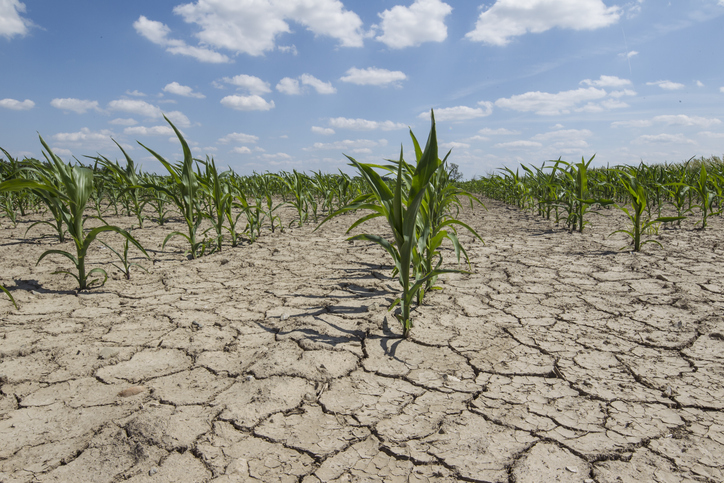Water is an increasingly important business risk

Authored by HDI
More than just a basic human need, water is fundamental to the global economy. But overconsumption, pollution, poor infrastructure and climate change are taking their toll on our water systems – and putting businesses at risk.
For months, extreme drought has afflicted numerous states in Mexico, straining water systems throughout the country. Maintaining fresh water supplies for Mexico’s 130 million inhabitants is, understandably, the government’s priority. But the lack of water is also a serious issue for industry. In Altamira, a port city that serves as a hub for chemical companies, local authorities recently limited water to 70 companies to prioritize access for residents. In Tamaulipas, along the Texas border, numerous businesses have cut back operations or even closed due to the drought.
This is not an isolated incident. Semiconductor factories in Taiwan, mines in Chile, raw material processors and carmakers in China – just some of the businesses that have endured closure or heavy restrictions due to water shortages in the last couple of years. Ultra-low water levels on vital shipping routes like the river Rhine and the Panama Canal have also recently affected international supply chains.
Beyond water’s obvious significance for our very existence, it is now, according to McKinsey, “as important to the world’s economy as oil or data”. Water impacts and is impacted by the production of almost every product and commodity on the planet – from food and clothing to semiconductors and EV batteries. Beyond this, many more industries rely on energy and input throughout their supply chains from water-intensive industrial and agriculture sectors, or on rivers and canals to transport goods.
Water stress equals risk
But could we be asking too much of the Earth’s water systems? Global demand for water has more than doubled since 1960 and is predicted to rise by up to 30% by 2050, according to the United Nations.
Overconsumption, pollution, poor infrastructure and climate change are increasingly taking their toll, affecting the ratio of water demand to renewable supply, causing water stress. Data from the World Resources Institute (WRI) shows that 31% of global GDP — a massive USD 70 trillion — will be exposed to high water stress by 2050, up from USD 15 trillion (24% of global GDP) in 2010.
For businesses, water stress equals water risk. This covers numerous factors, including physical risks such as water scarcity, the impact of regulatory initiatives, and reputational risks influenced by public awareness and conflict.
According to the WRI, the most water-intensive industries – and therefore the ones most at risk from water shortages – are apparel and textile manufacturing, cotton farming, livestock, oil and gas extraction and mining.
The most water-stressed regions are the Middle East and North Africa, where 83% of the population is exposed to extremely high water stress, meaning they use more than 80% of their renewable water supply for irrigation, livestock, industry and domestic needs. In South Asia, 74% is exposed.
Regulations to improve water use
It’s clear, then, that businesses need to take water risk extremely seriously and play their part in safeguarding this most precious of resources. This means improving operational efficiencies, seeking alternative technologies, embracing circular approaches and protecting local environments.
According to a recent global study by the CDP, a non-profit specializing in environmental reporting, 50% of companies surveyed said they are now engaging their supply chain on water risks. “This includes inserting water requirements into supplier contracts, collecting water data, raising awareness of water issues, or collaborating on innovation,” states the report. However, more than a quarter do not, nor do they plan to do so in the next two years.
Regulations will have an important role to play. In March 2023, the UN Water Conference saw the adoption of the Water Action Agenda, representing voluntary commitments of nations and stakeholders to accomplish the Sustainable Development Goals and their targets connected to water.
Elsewhere, the EU’s Corporate Sustainability Reporting Directive will require companies to disclose more about their water use, while there have also been calls for a European Blue Deal to address the continent’s water challenges. China also aims to strengthen its water use efficiency as part of its ‘three red lines’ policy for controlling the development and utilization of water resources.
Recognise opportunities, not just risks
The authors of a 2022 article for Harvard Business Review outline four key steps companies can take to improve their position with regard to water risk. These include gathering data on their impact on water quantity and setting reduction targets; assessing their impact on water quality and identifying improvements; supporting local conservation efforts; and embedding both water risks and opportunities into corporate governance and decision making.
The word ‘opportunity’ is an important one. According to the CDP, the cost of mitigating supply chain water risk is almost three times cheaper than the cost of impact. As Dr Patricia Calderon, CDP’s global head of water, says, “The bar needs to be raised much higher if we want to build strong and effective supply chains, free from serious water risks. Companies should shift their outlook to recognizing the significant opportunities from becoming more water resilient.”





